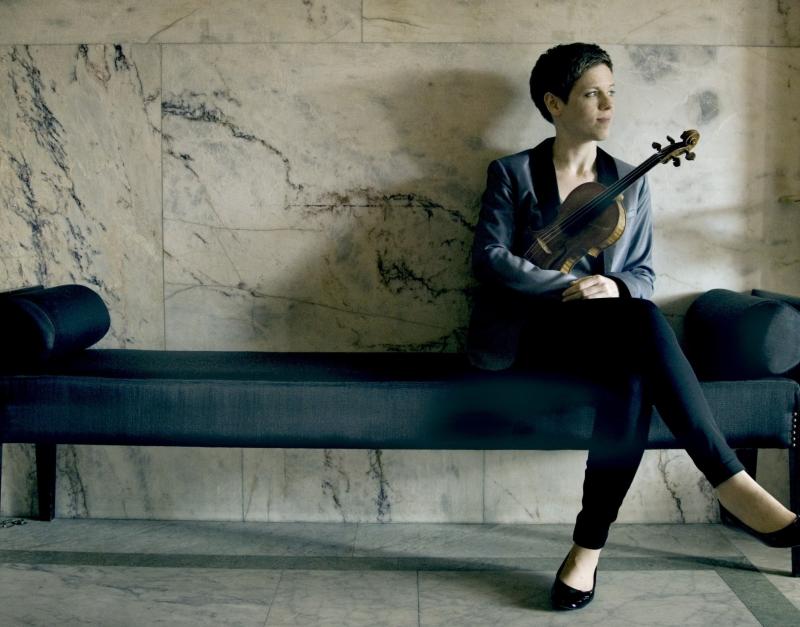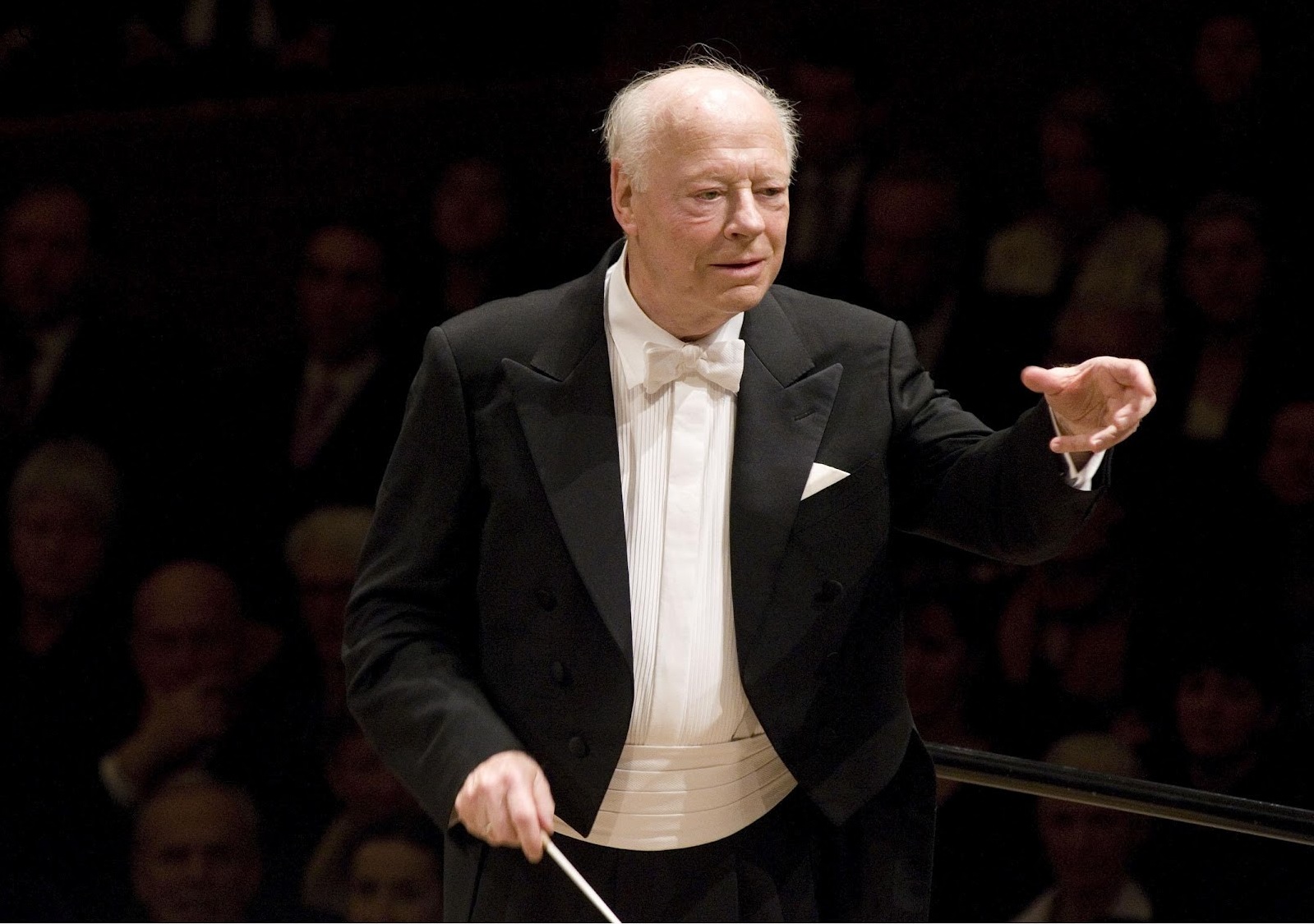Faust, Chamber Orchestra of Europe, Haitink, Barbican | reviews, news & interviews
Faust, Chamber Orchestra of Europe, Haitink, Barbican
Faust, Chamber Orchestra of Europe, Haitink, Barbican
Tragedy followed by levity in a rich programme with veteran Dutch conductor

In the year of his 85th birthday, and his 60th season as a conductor, Bernard Haitink is hardly taking it easy, with concerts with various orchestras around Europe and the US including an appearance at the Proms. In this visit to London with the Chamber Orchestra of Europe he may not have been bounding up the steps to the stage, but his powers with the baton remain undimmed.
His is a stately and commanding presence at the podium, almost still apart from the arms and the occasional emphatic step forwards. This proved plenty with which to wring out the tragic drama from the two works in the first half of the programme, Schumann’s Manfred Overture gradually winding down and falling still, laying the ground for Berg’s devastating Violin concerto.
Isabelle Faust’s performance was a masterclass in dramatic intensity: beginning with dry, wispy notes, gradually bringing vibrato in as the work began to gather pace. Bravely, Faust was prepared to allow her tone to not always be beautiful, to get raspy, gravelly sometimes, especially in the death throes of the second movement. She was also not afraid to dip under the orchestral texture, so as to rise up again all the more effectively. For what is the struggle of individual against orchestra if there is no jeopardy? (Try telling that to recording engineers who invariably boost the soloist – but that’s another story.) Haitink made sure she wasn’t swamped completely, and the orchestra responded sensitively.
 After this weighty first half, the ‘awakening of cheerful feelings on arriving in the country’ of Beethoven’s Pastoral Symphony was a blessed relief. In work in which there is barely a sniff of minor key until the fourth movement, even there passing quickly, the challenge is to shape the levity. Dynamic contrast is crucial and Haitink, conducting without the score, made sure the first movement’s long crescendos were paced perfectly and, never heavy-handedly, applied the same sculptural touch throughout. It was a performance that served the symphony very well.
After this weighty first half, the ‘awakening of cheerful feelings on arriving in the country’ of Beethoven’s Pastoral Symphony was a blessed relief. In work in which there is barely a sniff of minor key until the fourth movement, even there passing quickly, the challenge is to shape the levity. Dynamic contrast is crucial and Haitink, conducting without the score, made sure the first movement’s long crescendos were paced perfectly and, never heavy-handedly, applied the same sculptural touch throughout. It was a performance that served the symphony very well.
The Chamber Orchestra of Europe brought the tighly-knit sound it is well known for, with warm but never slushy strings and a top-notch wind ensemble. Its strength as a unit is the thing, but oboe, clarinet, flute and bassoon all got their chance to shine in solos and took it with relish.
The future of Arts Journalism
You can stop theartsdesk.com closing!
We urgently need financing to survive. Our fundraising drive has thus far raised £49,000 but we need to reach £100,000 or we will be forced to close. Please contribute here: https://gofund.me/c3f6033d
And if you can forward this information to anyone who might assist, we’d be grateful.

Subscribe to theartsdesk.com
Thank you for continuing to read our work on theartsdesk.com. For unlimited access to every article in its entirety, including our archive of more than 15,000 pieces, we're asking for £5 per month or £40 per year. We feel it's a very good deal, and hope you do too.
To take a subscription now simply click here.
And if you're looking for that extra gift for a friend or family member, why not treat them to a theartsdesk.com gift subscription?
more Classical music
 Elschenbroich, Grynyuk / Fibonacci Quartet, Edinburgh International Festival 2025 review - mahogany Brahms and explosive Janáček
String partnerships demonstrate brilliant listening as well as first rate playing
Elschenbroich, Grynyuk / Fibonacci Quartet, Edinburgh International Festival 2025 review - mahogany Brahms and explosive Janáček
String partnerships demonstrate brilliant listening as well as first rate playing
 BBC Proms: Akhmetshina, LPO, Gardner review - liquid luxuries
First-class service on an ocean-going programme
BBC Proms: Akhmetshina, LPO, Gardner review - liquid luxuries
First-class service on an ocean-going programme
 Budapest Festival Orchestra, Iván Fischer, Edinburgh International Festival 2025 review - mania and menuets
The Hungarians bring dance music to Edinburgh, but Fischer’s pastiche falls flat
Budapest Festival Orchestra, Iván Fischer, Edinburgh International Festival 2025 review - mania and menuets
The Hungarians bring dance music to Edinburgh, but Fischer’s pastiche falls flat
 Classical CDs: Hamlet, harps and haiku
Epic romantic symphonies, unaccompanied choral music and a bold string quartet's response to rising sea levels
Classical CDs: Hamlet, harps and haiku
Epic romantic symphonies, unaccompanied choral music and a bold string quartet's response to rising sea levels
 Kolesnikov, Tsoy / Liu, NCPA Orchestra, Chung, Edinburgh International Festival 2025 review - transfigured playing and heavenly desire
Three star pianists work wonders, and an orchestra dazzles, at least on the surface
Kolesnikov, Tsoy / Liu, NCPA Orchestra, Chung, Edinburgh International Festival 2025 review - transfigured playing and heavenly desire
Three star pianists work wonders, and an orchestra dazzles, at least on the surface
 BBC Proms: Láng, Cser, Budapest Festival Orchestra, Iván Fischer review - idiomatic inflections
Bartók’s heart of darkness follows Beethoven’s dancing light
BBC Proms: Láng, Cser, Budapest Festival Orchestra, Iván Fischer review - idiomatic inflections
Bartók’s heart of darkness follows Beethoven’s dancing light
 Weilerstein, NYO2, Payare / Dueñas, Malofeev, Edinburgh International Festival 2025 review - youthful energy and emotional intensity
Big-boned Prokofiev and Shostakovich, cacophonous López, plus intense violin/piano duo
Weilerstein, NYO2, Payare / Dueñas, Malofeev, Edinburgh International Festival 2025 review - youthful energy and emotional intensity
Big-boned Prokofiev and Shostakovich, cacophonous López, plus intense violin/piano duo
 theartsdesk at the Three Choirs Festival - Passion in the Cathedral
Cantatas new and old, slate quarries to Calvary
theartsdesk at the Three Choirs Festival - Passion in the Cathedral
Cantatas new and old, slate quarries to Calvary
 BBC Proms: Estonian Philharmonic Chamber Choir, Kaljuste review - Arvo Pärt 90th birthday tribute
Stillness and contemplation characterise this well sung late-nighter
BBC Proms: Estonian Philharmonic Chamber Choir, Kaljuste review - Arvo Pärt 90th birthday tribute
Stillness and contemplation characterise this well sung late-nighter
 BBC Proms: Kholodenko, BBCNOW, Otaka review - exhilarating Lutosławski, underwhelming Rachmaninov
Polish composers to the fore in veteran conductor’s farewell
BBC Proms: Kholodenko, BBCNOW, Otaka review - exhilarating Lutosławski, underwhelming Rachmaninov
Polish composers to the fore in veteran conductor’s farewell
 theartsdesk at the Pärnu Music Festival 2025 - Arvo Pärt at 90 flanked by lightness and warmth
Paavo Järvi’s Estonian Festival Orchestra still casts its familiar spell
theartsdesk at the Pärnu Music Festival 2025 - Arvo Pärt at 90 flanked by lightness and warmth
Paavo Järvi’s Estonian Festival Orchestra still casts its familiar spell

Add comment